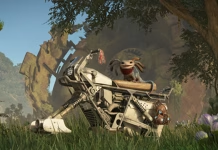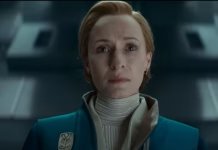In the final installment of inside the Stormtroopers we cover the seemingly benign, but in reality quite important topics of task organization, procurement, and force structure.
So we’ve discussed what the battle of Endor tells us about Stormtroopers, but what does the Battle of Hoth have to tell us? Endor was a situation in which the Stormtroopers were put in a fight they

were not really equipped to fight. Hoth, on the other hand, was one of the few large scale, force on force engagements, in which the Stormtroopers excel. The empire needed to assault a heavily fortified objective in a large scale combined arms offensive, something rarely seen since the end of the Clone Wars, and they performed admirably. This is the exact type of engagement the Stormtrooper corps is designed to fight. Unfortunately, as I’ve stated, this was the exception rather than the rule during the Galactic Civil War (GCW). For the most part, it appears the Empire engaged in pacification and counter insurgency missions. On Tattooine we see Stormtroopers tracking down fugitives, on Bespin they are left as a garrison, and on Endor they are tasked with a static defense against what turned out to be a rather asymmetric threat. We must conclude that the Stormtroopers were actually rather ill equipped to fight the GCW.
A perfect example of this lack of strategic shift to fighting a low intensity conflict is Stormtrooper armor: it is white. This kind of doesn’t really make sense considering that it doesn’t work at all on Endor or the desert. But it does make sense if you consider who it was made to perform against; a droid army that doesn’t “see” in the visual spectrum. It is meant to act as camouflage against the spectrum that droids see, in which is likely infrared. I suspect that Stormtrooper armor renders its wearers nearly invisible to droid sensors.

If you recall the Stormtrooper corps originated as the clone army, an army purposely built to fight the droid army of the separatists. After fighting the Clone Wars the Clone Army was transformed into the Stormtrooper corps and rolled into the larger Imperial Army. They do not appear to have forgotten the lessons they learned during the Clone Wars though and remained a force purpose built to fight a large, well supplied droid army despite the fact that this threat seemed to have disappeared entirely. This is fairly understandable considering the flag officers of the Empire, and thus the acquisition planners, spent their formative years fighting the separatists. They are trained to think in terms of fighting that type of war.

This did have some positive effects though. For one, it landed them with access to a large arsenal of armored personnel carriers and armored recon assets. These must have been the product of clone warrior acquisition teams. They are large, heavily armored and perfect for taking on hordes of droids. Nimble recon platforms like the AT-ST likely served the Empire well in patrolling tight areas and allowing them to bring force to bear in a hurry. The AT-ST seemed to perform reasonably well on Endor by providing the Empire with a significant firepower advantage.
The one real bright spot in the Stormtrooper composition though was the incorporation of military police. Its clear from Star Wars: A New Hope that MPs are organic to Stormtrooper units considering its Stormtroopers that we see manning the cell block. Darth Vader also leaves a garrison on Bespin, which may well have had a military police unit attached to it. Military police are far better suited to executing a counter insurgency than straight trigger pullers and this may have given the empire a somewhat more deft hand in dealing with rebels. Though this force structure wasn’t enough to save the empire it may have been enough to delay its fall.
So there we have it, a somewhat deeper look into the Stormtrooper corps. Rogue One: A Star Wars Story has helped provide us with more first hand accounts of Stormtrooper actions and even given us a glimpse at yet another variant; the coastal troopers. Truly a formidable force its unfortunate that they were employed so poorly by the empire.
































